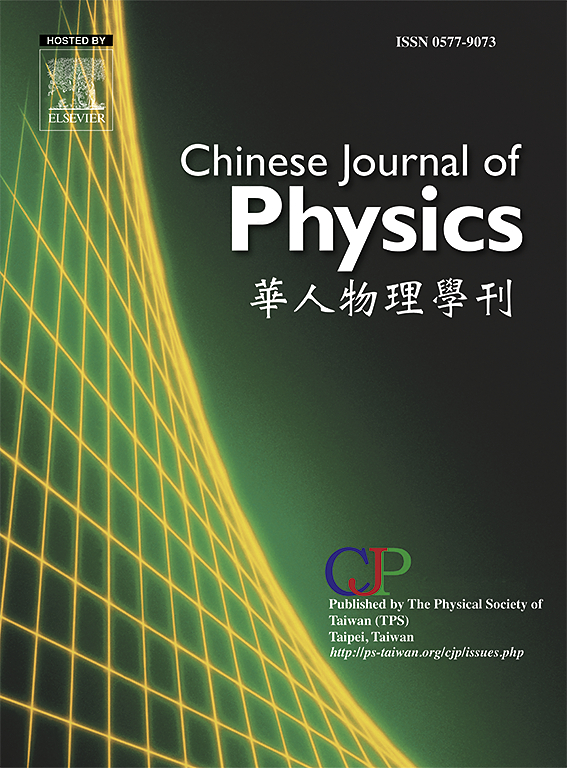Darcy–Forchheimer flow driven by membrane pumping and magnetohydrodynamics: perturbation solution
IF 4.6
2区 物理与天体物理
Q1 PHYSICS, MULTIDISCIPLINARY
引用次数: 0
Abstract
Membrane based pumping addresses the critical need for precise fluid control in biomedical applications, particularly in targeted drug delivery, dialysis, and biofluid circulation, by investigating magnetohydrodynamic (MHD) fluid flow in porous microchannels. The aim of this study is to develop a Darcy–Forchheimer-based MHD pumping model to analyze transient viscous fluid flow through a finite-length microchannel. The methodology involves modelling the upper wall of the channel as undergoing rhythmic, propagative membrane contractions to replicate physiological transport mechanisms and lower wall is stationary. A perturbation technique is employed to derive the analytical series solution, using lubrication theory and assuming a low Reynolds number. The effects of key parameters including the membrane shape parameter, Hartmann number, inverse Darcy number and Forchheimer number are examined on flow and pumping characteristics, shear stress and streamline patterns using MATLAB code. The results highlight that velocity reduces with increasing the Forchheimer number and Hartmann number due to enhanced inertial and Lorentz forces. In the microchannel, the maximum pressure difference is observed at the region where the membrane is located, highlighting the effectiveness of the pumping mechanism. The significance of this study lies in its contribution to the advancement of MHD-based biomedical micropumps, providing valuable insights into controlled fluid transport within microfluidic systems. These findings are especially important for enhancing the controlled and smooth process of biofluid dynamics at microscale without any contamination, and addressing critical challenges in biomedical engineering.

膜泵送和磁流体动力学驱动的达西-福希海默流:摄动解
膜泵通过研究多孔微通道中的磁流体动力学(MHD)流体流动,解决了生物医学应用中精确流体控制的关键需求,特别是在靶向药物输送、透析和生物流体循环方面。本研究的目的是建立一种基于darcy - forchheimer的MHD泵送模型,以分析通过有限长度微通道的瞬态粘性流体流动。该方法包括将通道的上壁建模为经历有节奏的、扩张性的膜收缩以复制生理运输机制,而下壁是静止的。采用微扰技术,利用润滑理论,在低雷诺数条件下推导了解析级数解。利用MATLAB程序分析了膜形参数、Hartmann数、反达西数和Forchheimer数等关键参数对流体流动和泵送特性、剪切应力和流线形态的影响。结果表明,由于惯性力和洛伦兹力的增强,速度随Forchheimer数和Hartmann数的增加而减小。在微通道中,在膜所在的区域观察到最大的压差,突出了泵送机制的有效性。这项研究的意义在于它对基于mhd的生物医学微泵的进步做出了贡献,为微流控系统中的受控流体输送提供了有价值的见解。这些发现对于在没有任何污染的情况下,在微尺度上加强生物流体动力学的控制和平滑过程,以及解决生物医学工程中的关键挑战尤其重要。
本文章由计算机程序翻译,如有差异,请以英文原文为准。
求助全文
约1分钟内获得全文
求助全文
来源期刊

Chinese Journal of Physics
物理-物理:综合
CiteScore
8.50
自引率
10.00%
发文量
361
审稿时长
44 days
期刊介绍:
The Chinese Journal of Physics publishes important advances in various branches in physics, including statistical and biophysical physics, condensed matter physics, atomic/molecular physics, optics, particle physics and nuclear physics.
The editors welcome manuscripts on:
-General Physics: Statistical and Quantum Mechanics, etc.-
Gravitation and Astrophysics-
Elementary Particles and Fields-
Nuclear Physics-
Atomic, Molecular, and Optical Physics-
Quantum Information and Quantum Computation-
Fluid Dynamics, Nonlinear Dynamics, Chaos, and Complex Networks-
Plasma and Beam Physics-
Condensed Matter: Structure, etc.-
Condensed Matter: Electronic Properties, etc.-
Polymer, Soft Matter, Biological, and Interdisciplinary Physics.
CJP publishes regular research papers, feature articles and review papers.
 求助内容:
求助内容: 应助结果提醒方式:
应助结果提醒方式:


